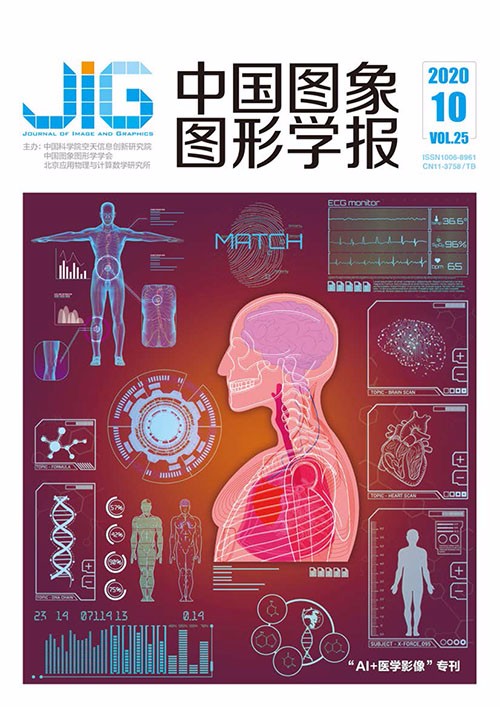
IVIM及纹理分析在术前预测宫颈癌类型和淋巴结转移研究进展
摘 要
本文综述了体素内不相干运动扩散加权成像(intravoxel incoherent motion diffusion-weighted imaging,IVIM-DWI)及纹理分析技术在术前鉴别宫颈癌组织学亚型及淋巴结转移的临床应用进展。MRI(magnetic resonance imaging)是宫颈癌临床术前最常用的影像学诊断和分期方法。宫颈癌的组织学类型及有无淋巴结转移与患者的生存及预后紧密相关。IVIM-DWI为MRI新型功能成像技术,其D值反映组织内单纯水分子的布朗运动信息、间接反映恶性肿瘤组织细胞密集度;其D*值和f值能提供肿瘤组织内血流灌注的信息。影像组学的纹理分析技术(texture analysis,TA)通过提取肿瘤组织的纹理特征进行客观、定量分析,能检测人眼不能识别的肿瘤组织的微观改变,揭示更多肿瘤组织的灰度分布与定量数据特征,为临床术前预测宫颈癌不同组织学类型及转移淋巴结提供了可能。
关键词
Advances in preoperative identification of subtypes and lymph node metastasis of cervical cancer by IVIM and texture analysis
Li Cuiping1, Dong Jiangning1,2(1.Affiliated Provincial Hospital of Anhui Medical University, Hefei 230001, China;2.The First Affiliated Hospital of USTC, Division of Life Sciences and Medicine, University of Science and Technology of China, Hefei 230031, China) Abstract
Cervical cancer is an important public health problem worldwide, and its high incidence and trends in younger generation also attract increasing attention. The biological behavior and prognosis of cervical cancer are closely related to its histological type and lymph node metastasis. Cervical cancer has many histological types: the most common type is squamous cell carcinoma, accounting for about 80%; the second most common type is adenocarcinoma, accounting for about 15%~20%, whose incidence is increasing in recent years because of the prevalence of cervical cancer screening. The rare types are adenosquamous carcinoma and neuroendocrine tumors (small cell carcinoma). Their incidence is about 5% and is increasing in recent years because of the cervical cancer screening. Cervical squamous cell carcinoma is more sensitive to radiotherapy and has a better prognosis, whereas cervical adenocarcinoma is less sensitive to radiotherapy and prone to lymph node and hematogenous metastasis. Small cell carcinomas are sensitive to chemotherapies due to their particular origin, prone to early lymph node metastasis, and have poor prognosis. Determining lymphatic metastasis based on magnetic resonance imaging (MRI) is the main factor to evaluate the prognosis of cervical cancer and formulate treatment plan. In the early diagnosis of cervical cancer, 10%~30% of patients have lymph node metastasis. Thus, the evaluation of pelvic and retroperitoneal lymph node metastasis of cervical cancer before treatment will be directly related to the choice of treatment options and prognosis of patients. Although cervical conization and lymph node biopsy are the gold standard for the diagnosis of cervical cancer histopathology and metastatic lymph nodes, the limitations of sampling and the heterogeneity of tumors do not fully reflect the histological information of primary lesions and metastatic lymph nodes of cervical cancer, and biopsy can increase the risk of tumor dissemination.MRI is the commonly used imaging diagnosis and staging method for cervical cancer before surgery. Intravoxel incoherent motion diffusion-weighted imaging (IVIM-DWI), a new functional imaging technique for MRI, is a multi-b-value and bi-exponential model diffusion-weighted technique, which can separate the random diffusion motion of water molecules from the microvascular perfusion effect and reflect the diffusion information of biological tissues. The main parameters are as follows: ADC, D, D*, and f value. The ADCstand value is similar to the ADC(apparent diffusion coefficient) value in a single-value DWI(diffusion weighted imaging) model, which reflects the combined effect of tissue diffusion and perfusion but can simply reflect the diffusion movement of water molecules in tissues. Given the influence of the elevation of microcirculation blood perfusion, the measured values tend to be high. The D value reflects Brownian motion information of pure water molecules in tissues and indirectly reflects cell density in tumors. The D* value and f value provide information of microcirculatory blood flow perfusion in tumors. Moreover, the D* value primarily reflects the blood velocity of microcirculation, whereas the f value primarily reflects the blood volume of microcirculation. Therefore, IVIM-DWI based on multiple parameters can play an important role in tumor characterization, staging, typing, and prediction of lymph node metastasis. At present, artificial intelligence (AI) plays a role in all aspects of people's life. Texture analysis (TA) technology is an important branch of AI research. Medically, TA has become a new research hotspot in Radiomics. TA uses corresponding computer software to extract texture features of lesion tissues from images for objective and quantitative analysis based on imaging images, which can detect microscopic changes of tumor tissues that cannot be recognized by the human eyes, and reveal gray distribution and quantitative data features in tumor tissues. To date, TA is based on images such as computed tomography(CT), MRI, or positron emission tomography(PET)/CT. Three methods are identified to obtain texture features: statistics based, transformation based, and structure based. Among the methods, the most commonly used method is statistics based. Texture features include first-order features, second-order features, and high-order features. First-order features, also known as histogram analysis, describe the gray distribution of individual pixel values in the region of interest, including mean, variance, skewness, kurtosis, and entropy. Second-order features represent local texture features on the basis of the relationship between adjacent 2 pixels. Common methods include gray-level co-occurrence matrix, gray-level run-length matrix, and gray-level area-size matrix. In addition, high-order features analyze local image information by applying gray-level difference matrix of adjacent pixels to reflect the change of local intensity or the distribution of homogeneous regions. TA can quantify the distribution of texture features, such as signal intensity distribution, morphology, and heterogeneity at the lesion site, to reflect the lesion features objectively and comprehensively. Therefore, TA plays an important role in the qualitative, definitive, and differential diagnosis of diseases. Researchers interpret texture information in images on the basis of imaging images, combined with imaging technology and computer AI technology, through the analysis of quantitative data, which provides a possibility for clinical preoperative prediction of different histological types of cervical cancer and metastatic lymph nodes. This article reviews the recent research progress in the clinical application of IVIM-DWI and TA in the preoperative identification of histological subtypes and lymph node metastasis of cervical cancer.
Keywords
cervical cancer intravoxel incoherent motion diffusion-weighted imaging(IVIM-DWI) texture analysis(TA) lymph node metastasis
|



 中国图象图形学报 │ 京ICP备05080539号-4 │ 本系统由
中国图象图形学报 │ 京ICP备05080539号-4 │ 本系统由